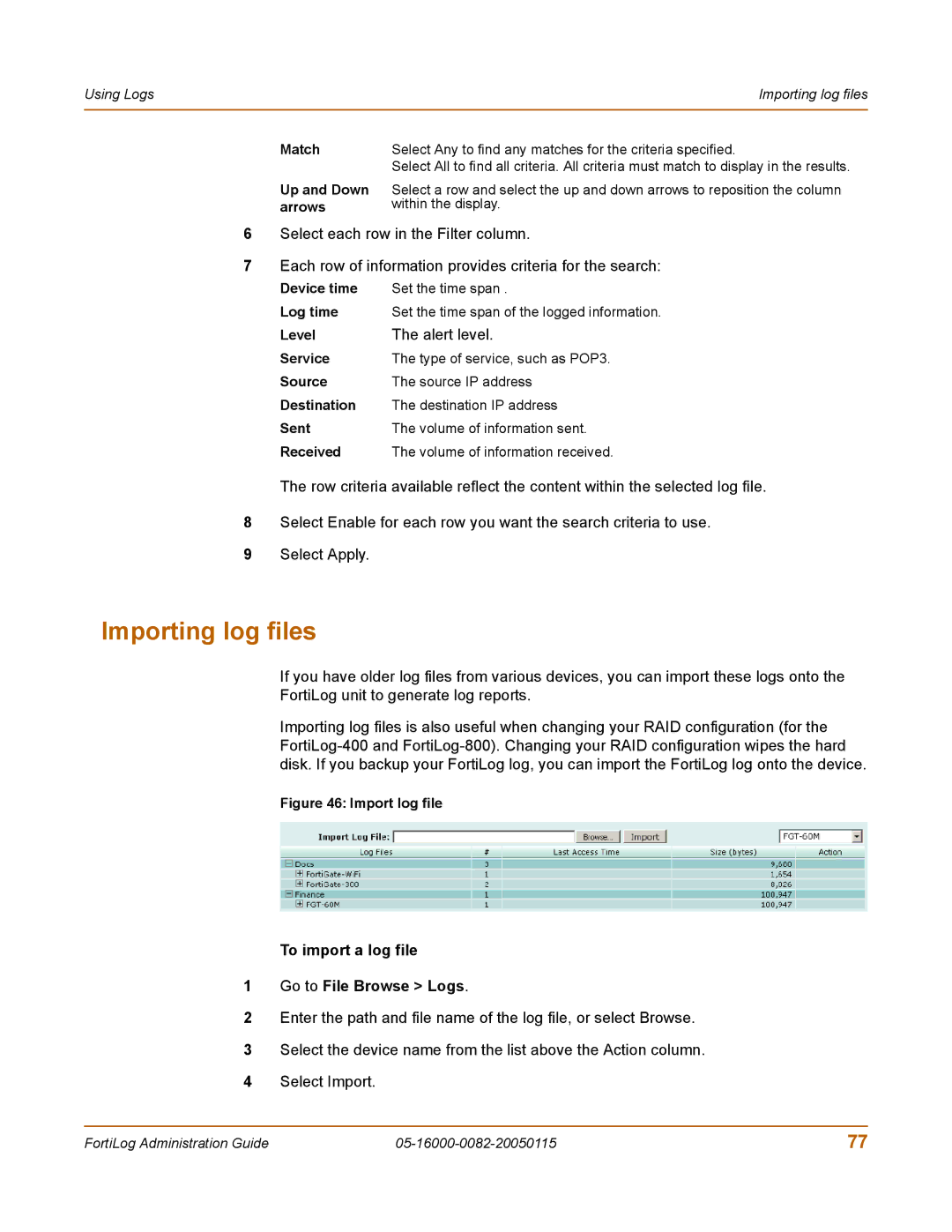
Using Logs | Importing log files |
|
|
Match
Up and Down arrows
Select Any to find any matches for the criteria specified.
Select All to find all criteria. All criteria must match to display in the results.
Select a row and select the up and down arrows to reposition the column within the display.
6Select each row in the Filter column.
7Each row of information provides criteria for the search:
Device time Set the time span .
Log time | Set the time span of the logged information. |
Level | The alert level. |
Service | The type of service, such as POP3. |
Source | The source IP address |
Destination | The destination IP address |
Sent | The volume of information sent. |
Received | The volume of information received. |
The row criteria available reflect the content within the selected log file.
8Select Enable for each row you want the search criteria to use.
9Select Apply.
Importing log files
If you have older log files from various devices, you can import these logs onto the
FortiLog unit to generate log reports.
Importing log files is also useful when changing your RAID configuration (for the
Figure 46: Import log file
To import a log file
1Go to File Browse > Logs.
2Enter the path and file name of the log file, or select Browse.
3Select the device name from the list above the Action column.
4Select Import.
FortiLog Administration Guide | 77 |
